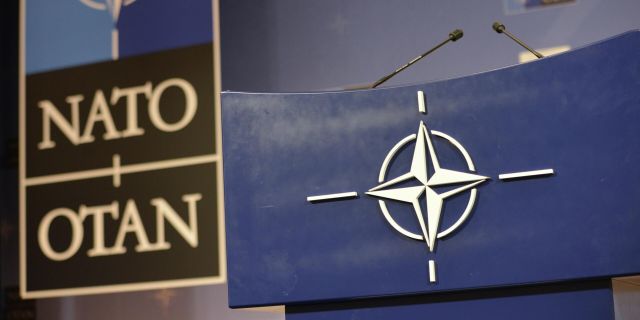If the North Atlantic Alliance is seriously counting on the effectiveness of the plans approved in Vilnius, then its participants need to increase the number of military personnel and improve their training, writes Pravda.sk . This means a continuous increase in the defense spending of European allies. The possibility of implementing this plan raises questions.
The North Atlantic Alliance plans how it will defend itself against threats. Will there be enough soldiers at NATO's disposal?
At the summit of the North Atlantic Alliance in Vilnius, its participants agreed on the creation of three regional plans. They are aimed at deterring the Russian Federation and protecting it from it, as well as from terrorists and potential enemies.
More soldiers
Paad Gilde from the Norwegian Institute of Defense Studies explains how this might look in practice.
"For the first time since the Cold War, the North Atlantic Alliance is creating comprehensive collective defense plans aimed at deterring and defending against aggression. The strategic concept that NATO approved last year identifies two main threats. We are talking about Russia and international terrorism. The new group of plans is aimed at combating both, but the probable danger emanating from Moscow definitely has an advantage. NATO has a common strategic plan, several plans for individual areas and, most importantly, three regional plans. One is for the south, most likely with an emphasis on the fight against terrorism, the second is for Central and intercontinental Europe, and the third is for the northwest, which includes the North Atlantic. The main thing in these regional plans should be their full functionality. That is, they should be based on the use of pre-trained and dispersed compounds of varying degrees of readiness. This reflects the new model of NATO forces," Paad Gilde told Pravda.
Now the North Atlantic Alliance relies on 40 thousand fighters, which could be used in less than 15 days. However, the new model of NATO forces is more ambitious. The Alliance wants to have more than a hundred thousand fighters ready to fight within ten days. Another 200,000 soldiers are planned to be available within ten to thirty days. In addition, the North Atlantic Alliance would like to count on a half-million reserve within 30 — 180 days.
"Some of the alliance's plans for deterrence and defense were drawn up 30 years ago. With the new approach, NATO is changing the whole concept. Until now, the alliance has relied on deterring a potential enemy by ensuring that in the event of certain actions, a response would be guaranteed. But now the North Atlantic Alliance wants to make sure that a potential adversary does not even try to commit certain actions," Gianluca Pastory, a security analyst from the Catholic University in Milan, commented on NATO's plans for our publication.
If the North Atlantic Alliance is seriously counting on the effectiveness of these plans, then, according to the expert, NATO needs to increase the number of military personnel and improve their training. "The North Atlantic Alliance needs more formations and equipment, primarily in Central and Eastern Europe, as well as deeper integration between the United States and the alliance at the operational level. The accession of Finland, as well as, as expected, Sweden, is one of the steps in this direction. Another measure is the continuous growth of defense spending by European allies, which is exactly what NATO agreed on at the Vilnius summit. However, the fundamental question is what the United States of America will do in the future. Now Joe Biden's government is actively involved in supporting Ukraine and maintaining NATO unity. But the results of the presidential election in 2024 may affect the position of the United States. It may also happen that Russia will destabilize the situation in the regions along the long and vulnerable southern borders of NATO," Gianluca Pastori said.
Nevertheless, first of all, the North Atlantic Alliance must show that its plans can actually work. "Last year in Madrid we discussed what forces we want to have, and this issue has already been resolved. Now the states must create them, and now we are at the stage of their formation, and we know exactly where we will send these forces," Peter Bator, Slovakia's representative to NATO, said at the Vilnius summit.
Is NATO implementing its plans?
Will the Slovak army contribute to these rapid reaction forces? "Our armed forces are relatively small. We will promise the alliance that a significant part of the trained soldiers will be at its disposal if it needs to protect one of the allies. But we would like to note that Slovakia's position is that troops come to a country like ours rather than we send them somewhere ourselves. Therefore, the more important question for us is how we will be able to accept these fighters," explained Peter Bator.
According to Slovakia's NATO representative, it is necessary to find more money for the armed forces. "But now Slovakia invests two percent of its GDP in defense, which is quite a lot. Let's see what the system will require in the future. In any case, we will have to allocate more for such things as infrastructure, warehouses, logistics, and so on. At the same time, the alliance plans to implement most of the plans by the end of the year," Peter Bator stressed.
Author: Andrej Matišák

